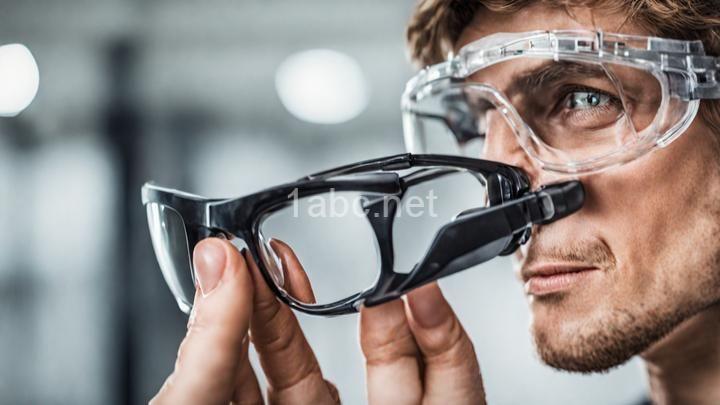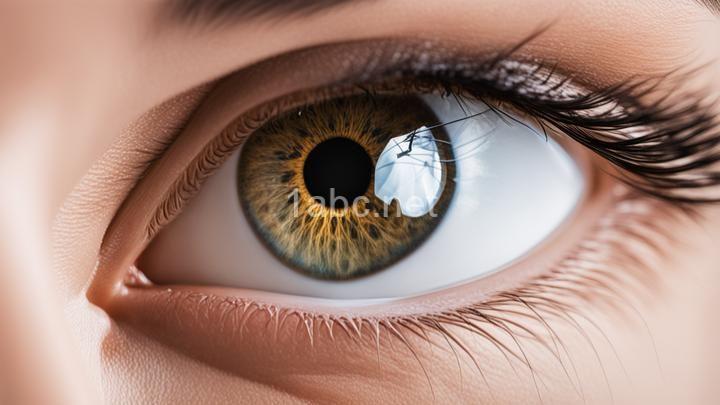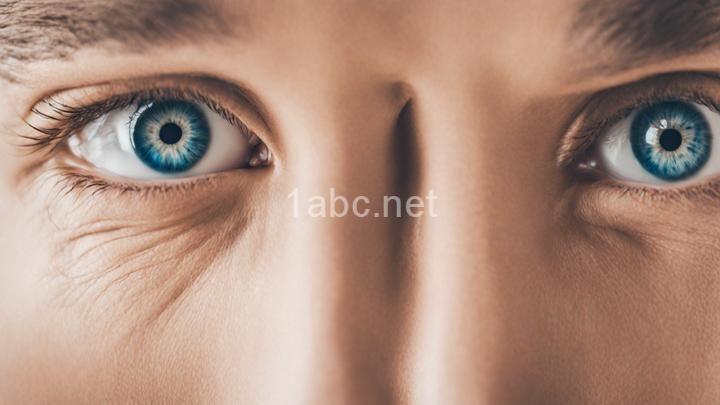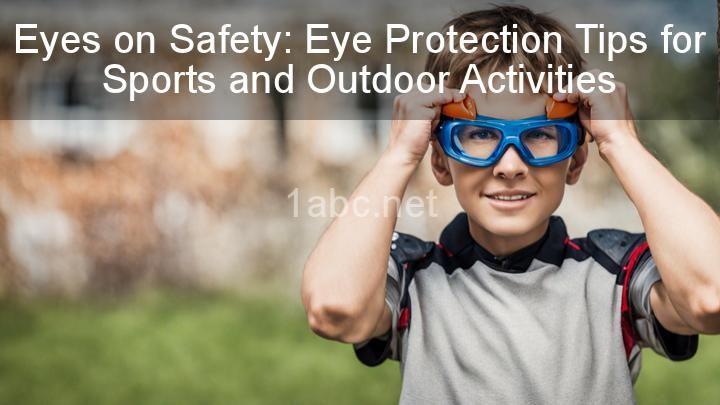The Benefits of Protective Eyewear: Tips for Choosing the Right Eye Protection

Introduction:
Hey there, eyewear enthusiasts! We're thrilled to have you here today as we delve into the world of protective eyewear. Whether you're an adventure junkie, a DIY enthusiast, or simply someone who values their eye health, this blog post is for you. We'll be exploring the importance of protective eyewear and providing valuable tips to help you choose the right eye protection. So, let's dive in and discover how you can keep your peepers safe and stylish!
1. Understand the Need for Protective Eyewear:
Picture this: you're out on the court, giving it your all in a game of basketball, when suddenly, a stray elbow comes flying towards your face. Without proper eye protection, you're putting your vision at risk. That's just one example of why protective eyewear is crucial in various situations. Whether you're playing sports, working in construction, or pursuing hobbies like woodworking, your eyes are exposed to potential risks and hazards.
To drive home the importance, let's look at some statistics. Did you know that over 40,000 eye injuries occur each year in the United States alone? These injuries can range from minor scratches to severe trauma, with long-lasting effects on your vision. By wearing protective eyewear, you can significantly reduce the risk of eye-related accidents and ensure your peepers stay in top-notch condition.
2. Types of Protective Eyewear:
Now that we understand the need for eye protection, let's explore the different types of protective eyewear available in the market. When it comes to shielding your eyes, you have a variety of options to choose from:
-
Safety Glasses: These are your go-to choice for activities that involve airborne particles, such as woodworking or construction work. Safety glasses typically feature impact-resistant lenses and side shields for added protection.
-
Goggles: If you're working with chemicals, participating in extreme sports, or engaging in activities with a higher risk of splashes or spills, goggles are your best bet. They provide a secure seal around your eyes, preventing any foreign substances from entering.
-
Face Shields: For those situations where you need to shield your entire face, such as when using power tools or working in hazardous environments, face shields are the way to go. They offer full-face protection and are often used in conjunction with safety glasses or goggles.
-
Sunglasses: While we often associate sunglasses with style and protection from the sun, they can also double as protective eyewear. Look for sunglasses that provide both UV protection and impact resistance for outdoor activities like biking or hiking.
3. Factors to Consider When Choosing Eye Protection:
When selecting eye protection, a few crucial factors come into play. Let's take a closer look at what you should consider:
-
Comfort and Fit: Long-term use of eyewear should never be a pain in the... well, eyes! Opt for eyewear that fits comfortably and snugly without causing discomfort or distractions. Adjustable nose pads, cushioned temples, and lightweight materials can all contribute to a comfortable fit.
-
Impact Resistance: Accidents happen, and when they do, you want eyewear that can withstand the impact. Look for lenses made from impact-resistant materials like polycarbonate or Trivex. These lenses offer superior protection against flying debris or accidental impacts.
-
UV Protection: The sun's harmful ultraviolet (UV) rays can wreak havoc on your eyes, leading to conditions like cataracts and macular degeneration. When choosing eye protection, ensure that it offers adequate UV protection to shield your eyes from these harmful rays.
4. Customization Options:
In the world of eye protection, one size doesn't always fit all. Luckily, some eyewear options can be customized based on individual needs or prescription requirements. Here are a couple of customization options to consider:
-
Transitional Lenses: If you find yourself frequently transitioning between indoor and outdoor environments, transitional lenses are a game-changer. These lenses automatically adjust their tint based on the level of UV light, providing optimal visibility in all lighting conditions.
-
Lens Coatings: To enhance the functionality of your eyewear, consider lens coatings like anti-fog or anti-scratch coatings. Anti-fog coatings prevent your lenses from fogging up in humid environments, while anti-scratch coatings keep your eyewear looking pristine even after a few bumps and scrapes.
5. Proper Maintenance and Care:
Just like any other piece of equipment, protective eyewear requires proper maintenance and care to ensure its longevity and effectiveness. Here are a few simple tips to keep your eyewear in top shape:
-
Cleaning Instructions: Follow the manufacturer's cleaning instructions to avoid damaging your eyewear. Typically, a mild soap and water solution or specialized lens cleaning solution, along with a microfiber cloth, will do the trick.
-
Storing Guidelines: When you're not wearing your eyewear, store it in a protective case to prevent scratches or accidental damage. Keep them away from direct sunlight or extreme temperatures that could compromise the integrity of the lenses.
-
Regular Inspections: Periodically inspect your eyewear for any signs of damage or wear. If you notice any cracks, loose frames, or compromised lenses, it's time to replace them. Your eye health is worth the investment!
6. Additional Tips:
As you embark on your eye protection journey, here are a couple of extra tips to keep in mind:
-
Research Reputable Brands: When it comes to protecting your eyes, quality matters. Research reputable brands known for producing high-quality protective eyewear. Look for certifications like ANSI Z87.1 (American National Standards Institute) for safety glasses or EN166 (European Norm) for general eye protection.
-
Seek Professional Advice: When in doubt about specific eye protection requirements for a particular activity or situation, don't hesitate to consult professionals like optometrists or safety experts. They can provide personalized recommendations based on your needs and ensure you're making the right choice.
Conclusion:
Congratulations, eyewear enthusiasts! You've made it to the end of our eye-opening journey into the world of protective eyewear. We hope you now have a deeper understanding of the importance of eye protection and how it contributes to your overall eye health and safety. Remember, always prioritize your eye protection needs and choose eyewear that offers the right level of protection for your specific activities.
Before we bid farewell, we want to express our gratitude for joining us on this adventure. We'd love to hear your thoughts, experiences, or any questions you may have about protective eyewear. So, drop us a comment below and let's continue the conversation. Stay safe, stylish, and keep those eyes sparkling!
Closing:
Thanks for reading, eyewear enthusiasts! Stay tuned for more eye-popping content from your friends at dorenelashay9177. Until next time, take care and keep those peepers protected!
Warmest regards,
dorenelashay9177 Team
FREQUENTLY ASKED QUESTIONS
Why is protective eyewear important?
Protective eyewear is crucial for several reasons. Firstly, it shields our eyes from potential hazards, such as flying debris, chemicals, or harmful radiation. By wearing protective eyewear, we reduce the risk of eye injuries and prevent long-term damage to our vision.Another reason why protective eyewear is important is that it can prevent eye strain and fatigue. Whether we are working on a computer for long hours or spending time outdoors in bright sunlight, wearing appropriate eyewear can help reduce eye strain and discomfort.
Additionally, protective eyewear is essential for certain activities and professions. Think about construction workers, laboratory technicians, or athletes participating in sports like skiing or cycling. These individuals are exposed to specific risks that can be mitigated by wearing the right eyewear. It's all about ensuring safety and preventing accidents.
It's worth mentioning that not all protective eyewear is created equal. Different activities and environments require different types of eyewear. For instance, safety glasses with impact-resistant lenses are suitable for construction sites, while sunglasses with UV protection are essential for spending time outdoors.
In conclusion, protective eyewear is important because it safeguards our eyes, reduces the risk of injuries, prevents eye strain, and ensures safety in various activities. So, whether you're working on a project, enjoying outdoor activities, or engaging in a specific profession, don't forget to prioritize the health and protection of your eyes by wearing appropriate eyewear. Stay safe and see clearly!
What kind of hazards can protective eyewear protect against?
Protective eyewear is designed to safeguard your eyes from a variety of potential hazards. It acts as a barrier, shielding your eyes from harmful substances and preventing injuries. Some of the hazards that protective eyewear can protect against include:
-
Chemicals: If you work in an environment where you may come into contact with chemicals or hazardous liquids, wearing protective eyewear can prevent these substances from splashing or getting into your eyes.
-
Dust, debris, and flying particles: Whether you're working in construction, woodworking, or any other field where there is a risk of flying particles, protective eyewear can help prevent them from entering your eyes and causing irritation or injury.
-
UV radiation: Exposure to ultraviolet (UV) radiation from the sun can have damaging effects on our eyes. Wearing sunglasses with UV protection or safety glasses specifically designed for UV radiation can help shield your eyes from this harmful radiation.
-
Impact and blunt force: In certain occupations or activities, such as sports or manufacturing, there is a risk of objects hitting or striking your eyes. Protective eyewear, such as safety goggles or face shields, can provide an extra layer of protection against impact-related injuries.
-
Heat and light: Certain work environments, such as welding or foundries, generate intense heat and bright light that can be harmful to the eyes. Wearing specialized eyewear with tinted lenses or shields can help protect against these hazards.
Remember, it is important to choose the right type of protective eyewear for the specific hazards you may encounter in your work or recreational activities. Be sure to consult with a professional or refer to safety guidelines to ensure you have the appropriate level of protection for your eyes.
How do I choose the right protective eyewear?
When it comes to choosing the right protective eyewear, there are a few important factors to consider. First and foremost, you'll want to ensure that the eyewear you choose meets the necessary safety standards for your specific needs. This could include impact resistance, UV protection, or specific certifications for certain industries or activities.Next, it's crucial to think about the level of comfort and fit that the eyewear provides. Protective eyewear should be snug enough to stay securely in place without causing discomfort or pressure points. Adjustable features such as nose pads and temple arms can help customize the fit to your liking.
Another consideration is the lens type. Different lenses offer varying levels of protection and functionality. For example, clear lenses may be suitable for general eye protection, while tinted lenses can help reduce glare in outdoor environments. Additionally, there are specialized lenses available for specific tasks, such as anti-fog coatings for humid conditions or polarized lenses for enhanced clarity.
Style and aesthetics may also play a role in your decision-making process. While the primary goal is ensuring your safety, there's no harm in finding a pair of protective eyewear that you feel comfortable and confident wearing.
Lastly, it's always helpful to read reviews or seek recommendations from trusted sources, such as professionals in your industry or fellow users who have experience with different brands or models. Their insights can provide valuable guidance in selecting the right protective eyewear for your needs.
Remember, protecting your eyes is essential, so take the time to research and choose the eyewear that will provide the necessary protection and meet your personal preferences. Stay safe and keep those peepers protected!
What types of protective eyewear are available?
There are several types of protective eyewear available to suit different needs and situations. Some common types include safety glasses, goggles, face shields, and welding helmets.Safety glasses are a popular choice for general eye protection. They typically feature impact-resistant lenses and side shields to provide coverage from flying debris or particles.
Goggles offer a more enclosed and secure fit, providing additional protection from splashes, dust, and chemical hazards. They often have a snug seal around the eyes to prevent any entry of harmful substances.
Face shields are larger protective shields that cover the entire face, including the eyes. They are commonly used in industries where there is a risk of exposure to dangerous substances, such as chemicals or biohazards. Face shields can be worn over safety glasses or goggles for added protection.
Welding helmets are specifically designed to protect the eyes and face during welding processes. They have a darkened lens that filters out harmful ultraviolet (UV) and infrared (IR) radiation emitted during welding. This type of eyewear ensures both eye safety and visual clarity while working with intense light sources.
It's important to choose the appropriate type of protective eyewear based on the specific hazards you may encounter. Always ensure that the eyewear you select meets the relevant safety standards and provides adequate protection for your eyes.


